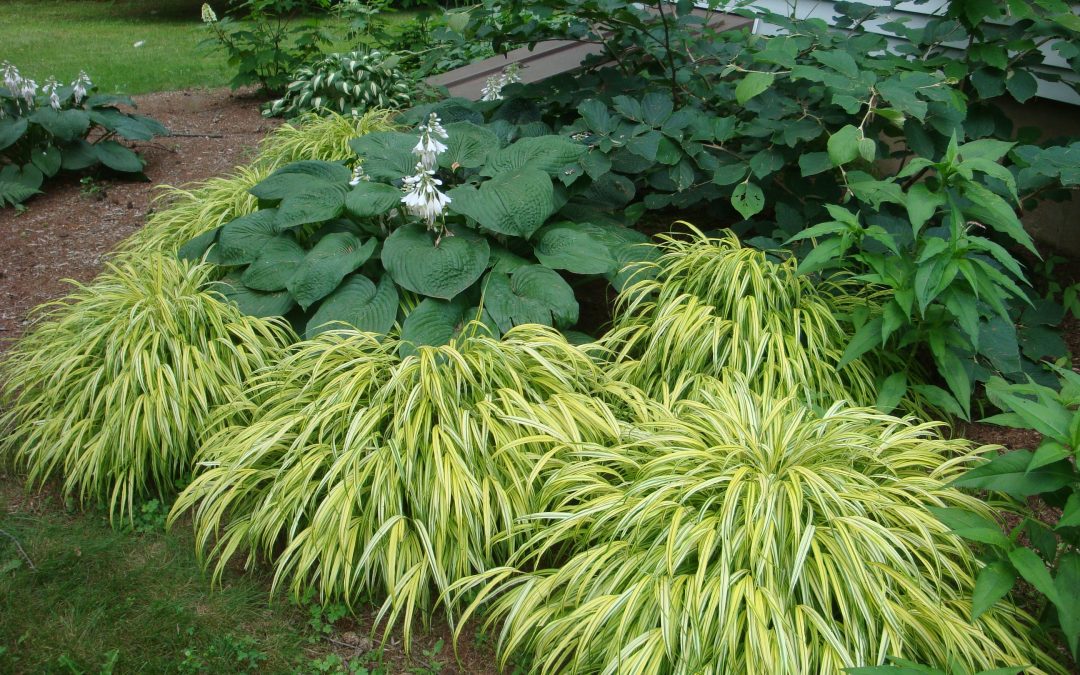About Heronswood Hakonechloa – Japanese Forest Grass
First found growing wild in Hakon, a region of Japan, these dwarf grasses have become treasured highlights in woodland gardens. The scientific name comes from Hakon (a region of Japan), chloa (Greek for grass), and macra (large). Clumps grow best under dappled light, forming dense masses of pendulous free-flowing foliage. Dwarf and deer resistant, Hakone grasses have become favorites for lining pathways and container plantings. Flowers are insignificant and invasiveness is not a problem. The gold variegated ‘Aureola’ contrasts well with heucheras, ferns and hostas. ‘Beni Kazi’ stays showy well into fall.
How to Care for your Hakonechloa
Try to plant your Japanese forest grass as soon as possible. These are adaptable and will have no problem acclimating to your growing area. Be sure to keep the soil moist to the touch if you do not transplant immediately. Protect from strong winds and drying out before planting.
Where do I plant my Japanese Forest Grass?
Choose moist, well-drained areas in part shade. Leaves tend to dry fast or burn when exposed to direct, full hot sun, especially in the South. Select garden spots where the foliage can cascade, along paths or slopes.
How do I plant my Japanese forest grass?
Dig a hole that is twice as wide and deep as the container the plant is in. Work this soil well and incorporate a balanced, slow-release fertilizer into the planting hole. Backfill the hole and set the plant even with ground level, firming the soil around it. Water in very well, making sure that the roots are in contact with the soil. While plants are getting established in the garden, water as needed.
What should I do in order to have my Japanese forest grass increase in beauty from year to year?
Plants are slow growing, and division is not needed until clumps have reached over two feet across. Plants are best left alone for a couple of years, and are the most impressive when clumps are large and in full foliage. Stems can be cut to the ground in late winter or early spring.

